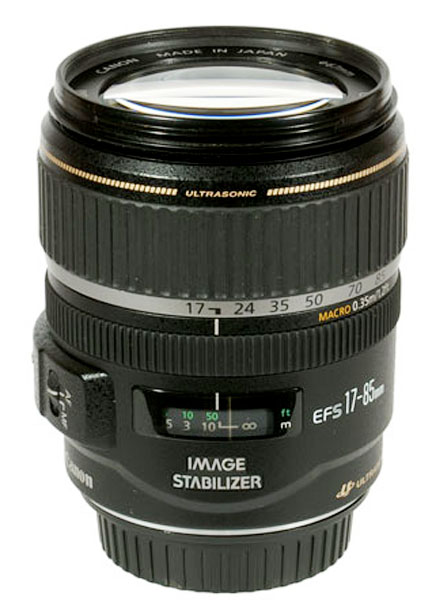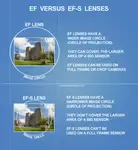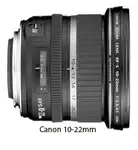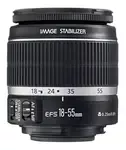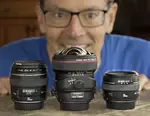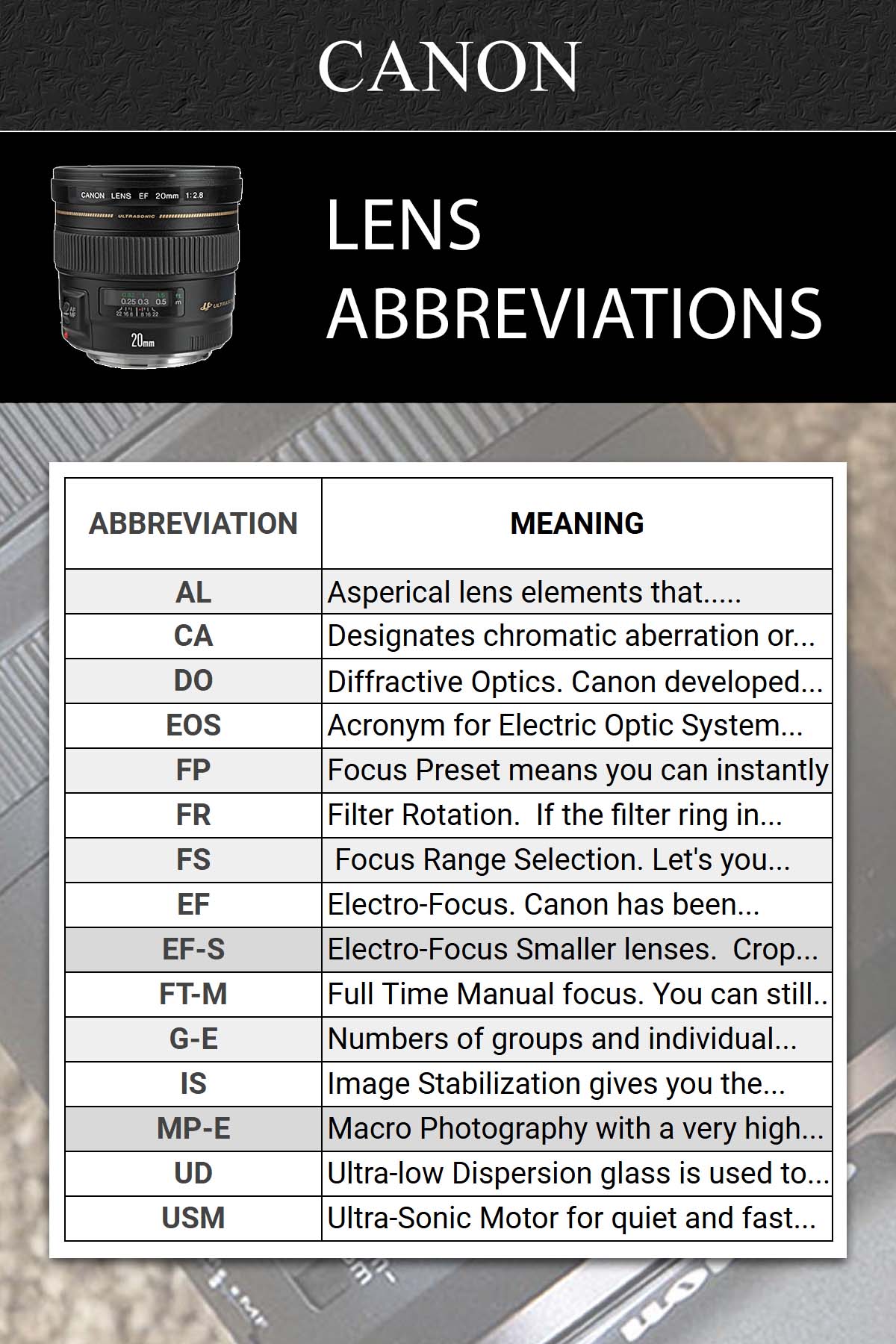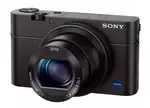Canon Lens Abbreviations
(Canon Lens Terminology)

There are so many Canon lens abbreviations, terms, and definitions surrounding digital camera lenses that it can be confusing to professional photographers and beginning photographers alike.
This article is being written to clear up the confusion and make it simple to understand the meaning and relevance of the terminology used to describe Canon lenses. Lens manufacturers often use a series of codes or lens markings to describe their lenses.
Canon Lens Abbreviations - Section 1
These are the most commonly searched for abbreviations and definitions:
EF - Stands for electro-focus. Canon has been using lenses that connect electronically (as apposed to mechanically)to their cameras for over 25 years. EF lenses are big enough to cover the entire sensor of a full-frame camera. All EF lenses will fit on all EOS bodies.
YOU CAN use an EF lens on a smaller APS-C camera like the Canon EOS 70D, 60D, 50D or Canon Rebel t3i, t4i, or t5i, but you can't use an EF-S lens on a full frame sensor camera like the Canon 5D or 1Dx.
EF-S - These are the smaller sisters of the EF lenses. They are for APS-C cameras that have a smaller sized sensor. They DO NOT WORK on full-sized Canon cameras like the Canon 5D series or 1Dx series of cameras. They don't need as much glass. They are smaller and more affordable than the EF lenses. Here's a more complete article on EF versus EF-S Lenses.
These APS-C cameras are referred to as "crop sensor" camera bodies because give you a cropped view of a subject compared to the same lens used on a full frame sensor camera.

IS - Image Stabilization. Gives you the ability to shoot sharper photos without UN-sharpness or blur caused from camera movement while using a slow shutter speed.
IS is not intended for moving subjects or for use when your camera is mounted on a tripod.
L - The L series of Canon camera lenses designates the top of the line, Luxury lenses. These are the professional lenses, built to the highest quality standards, often including weather protection. They often have low maximum apertures to give best results in low light situations and in creating bokeh (soft blurry backgrounds). Here's the article discussing if L lenses are worth the money.
USM- Ultra-sonic Motor for quiet and fast focusing. Most modern Canon lenses have this design now. It allows you to manually override the auto-focus, a nice feature when you want to control the location of sharp areas in your composition.
Canon Lens Abbreviations - Section 2
These are the less commonly searched for definitions and abbreviations but still may be important for you to understand as you research information on the best lens to use for your situation.
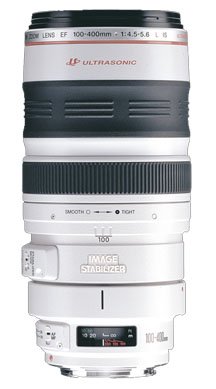 Canon EF Lens
Canon EF LensAL - Asperical lens elements that are designed to improve clarity and sharpness from one corner of the image to the other.
CA - can designate chromatic aberrations (defects in an image) or circular aperture (designed for better blurred background-bokeh)
DO - Diffractive Optics. Canon developed a way to make the lens shorter and lighter and improve the optical performance.
EOS - The acronym for Electric Optic System that Canon has been using for many years for it's digital cameras with changeable lenses.
FP - Focus Preset. A focus preset means you can instantly return to a preset focus distance. Some super long telephotos have this.
FR- Filter Rotation. If the filter ring in front of your lens rotates when you focus the lens, this will dramatically effect the photo if you are using a polarizing filter or a graduated filter.
It's better to have a NON-rating filter ring.
FS - Focus Range Selection. Let's you limit the range of focus in a lens, useful for long telephoto zooms to make them auto-focus faster. Great for moving targets with wildlife photographers.
FT-M - Full time manual focus. You can still use manula focus when your lens is set to aut-focus setting.
f/4.5-5.6 - The "f" number is simply the maximum (widest) aperture that a lens can achieve also referred to how "fast" it is. An f/2.0 lens is faster and more capable of shooting in lower light situations than an f/4 lens. It also contains more glass , is heavier, and more expensive than a "slower" lens.
G-E - The numbers of groups and individual elements within a lens design. Another term that is less meaningful than it was early on in lens design. Modern lenses are so complex in their design that the number of lens elements and groups is not a good indicator of lens quality anymore.
MP-E - Macro Photography with a very high magnification, up to 5x. The Canon MP-E 65mm f/2.8 Macro uses this abbreviation
SF - Soft Focus. More popular before digital photography arrived and the ability to soften/retouch images with software after capture. Soft focus lens were designed for pleasing effects with portrait photography. The only Canon soft focus lens is the 135mm f/2.8
TS-E - Tilt-Shift lenses give you the ability to change the focus plane as well as alter the perspective which is very desirable to do with architectural photography.
UD - Ultra-low dispersion glass is used to correct for chromatic aberration.
One final note of Canon lens abbreviations for lenses and camera bodies. Canon uses roman numerals to designate the upgraded version of a lens or camera.
As an example the EF 70-200mm f/2.8L IS II USM is the updated version of the original EF 70-200mm f/2.8L IS USM and the Canon 5D Mark III is the upgrade version of the Canon 5D Mark II.
Have a blast Keep shooting your Canon!

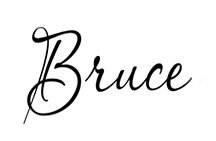
Bruce Lovelace is the publisher of Canon Camera Geek. Read more about him on the About Page. He also publishes how to articles and camera gear reviews at the Photography Tips website.
View some of Bruce's photos on Instagram and Flickr. Join the tribe of followers on YouTube. Bruce also runs photo workshops and provides 1 on 1 digital photography coaching.
Recent Articles
-
Choose the Right Memory Card for Your Canon R6 Mark II: Speed And Size
Nov 05, 25 02:04 PM
R6 Mark II Memory Card -
Canon G1x Mark II vs G1X-Side By Side Comparison of Canon G1X Cameras
Oct 22, 25 08:35 AM
G1 X Mark II vs. G1 X: Is the New Version a HUGE Leap... Or a Massive Mistake? Canon responded to the criticisms of the original G1X. Canon G1X Mark II vs G1X -
Sony RX100 III vs G1x Mark II by Canon. Side by Side Comparison
Oct 22, 25 08:07 AM
It's another one of those epic camera battles, this time not the Canon vs Nikon but rather the RX100 III Vs G1X Mark II battle.
